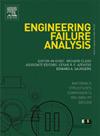Investigation of environmental effects through long-term vibration monitoring on the structural behavior and seismic performance assessment of the Hagia Sophia Bell Tower
IF 5.7
2区 工程技术
Q1 ENGINEERING, MECHANICAL
引用次数: 0
Abstract
This study presents development and application of a high-precision, multi-channel vibration measurement system to monitor structural behavior of Hagia Sophia Bell Tower. The research focused on assessing the dynamic characteristics of the tower, both through experimental measurements and numerical simulations. The study began by conducting an in-depth analysis of the tower’s dynamic properties using finite element (FE) models, enabling the identification of experimental frequencies. Long-term monitoring was carried out using the newly developed vibration measurement system, complemented by a digital sensor that enabled simultaneous recording of environmental conditions such as temperature and humidity. These parameters were continuously monitored to assess their potential impact on the frequencies and dynamic responses of the tower. Subsequently, regression analyses were performed to establish the relationship between environmental factors, and the tower’s structural behavior. The experimental data were used to update FE models, ensuring a more accurate representation of the tower’s actual behavior under varying conditions. Earthquake analyses were also conducted on the FE models to evaluate the seismic performance. The results of the study confirmed that vibration testing, combined with environmental monitoring, was a highly effective method for detecting changes in structural behavior. The findings highlighted the significant influence of environmental factors on the dynamic characteristics, with frequency variations reaching an average of 3.6%. These effects should be considered in ongoing monitoring. It was demonstrated that updating FE models reduced numerical errors below 2.5%. These findings gave importance of integrating long-term monitoring with FE model updating, providing more accurate protection and assessment strategies.
通过长期振动监测对圣索菲亚钟楼结构性能和抗震性能评估的环境影响调查
本文介绍了一种高精度、多通道振动测量系统的开发和应用,以监测圣索菲亚钟楼的结构性能。研究的重点是通过实验测量和数值模拟来评估塔的动态特性。该研究首先使用有限元模型对塔的动态特性进行了深入分析,从而确定了实验频率。长期监测采用新开发的振动测量系统,辅以数字传感器,可以同时记录环境条件,如温度和湿度。这些参数被持续监测,以评估它们对塔的频率和动态响应的潜在影响。随后,进行了回归分析,以建立环境因素与塔的结构行为之间的关系。实验数据用于更新有限元模型,确保更准确地表示塔在不同条件下的实际行为。并对有限元模型进行了地震分析,评价了结构的抗震性能。研究结果证实,振动测试与环境监测相结合,是检测结构行为变化的一种非常有效的方法。研究结果强调了环境因素对动态特性的显著影响,频率变化平均达到3.6%。在持续监测中应考虑到这些影响。结果表明,更新有限元模型后,数值误差降低到2.5%以下。这些发现说明了将长期监测与有限元模型更新相结合的重要性,提供了更准确的保护和评估策略。
本文章由计算机程序翻译,如有差异,请以英文原文为准。
求助全文
约1分钟内获得全文
求助全文
来源期刊

Engineering Failure Analysis
工程技术-材料科学:表征与测试
CiteScore
7.70
自引率
20.00%
发文量
956
审稿时长
47 days
期刊介绍:
Engineering Failure Analysis publishes research papers describing the analysis of engineering failures and related studies.
Papers relating to the structure, properties and behaviour of engineering materials are encouraged, particularly those which also involve the detailed application of materials parameters to problems in engineering structures, components and design. In addition to the area of materials engineering, the interacting fields of mechanical, manufacturing, aeronautical, civil, chemical, corrosion and design engineering are considered relevant. Activity should be directed at analysing engineering failures and carrying out research to help reduce the incidences of failures and to extend the operating horizons of engineering materials.
Emphasis is placed on the mechanical properties of materials and their behaviour when influenced by structure, process and environment. Metallic, polymeric, ceramic and natural materials are all included and the application of these materials to real engineering situations should be emphasised. The use of a case-study based approach is also encouraged.
Engineering Failure Analysis provides essential reference material and critical feedback into the design process thereby contributing to the prevention of engineering failures in the future. All submissions will be subject to peer review from leading experts in the field.
 求助内容:
求助内容: 应助结果提醒方式:
应助结果提醒方式:


